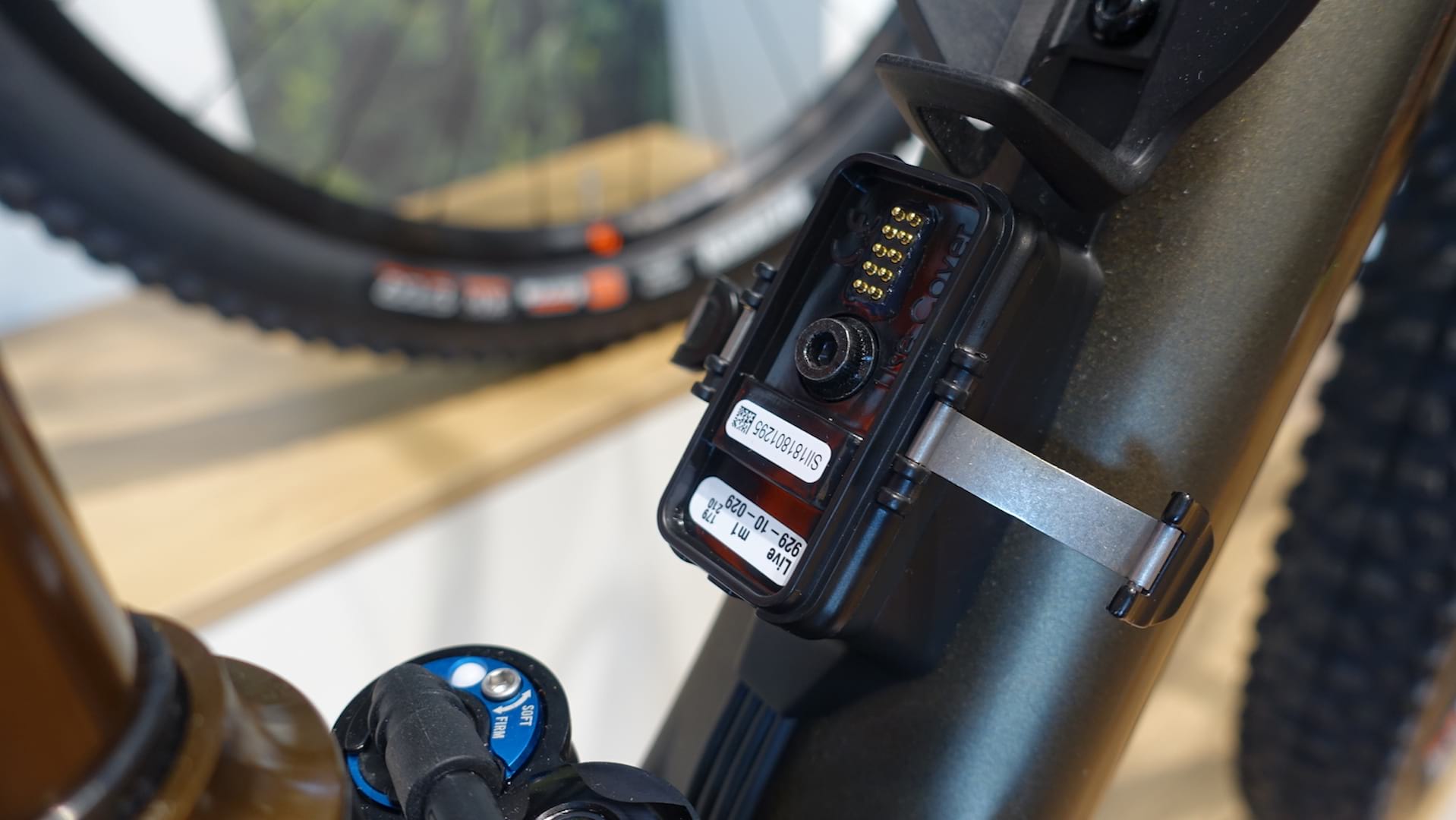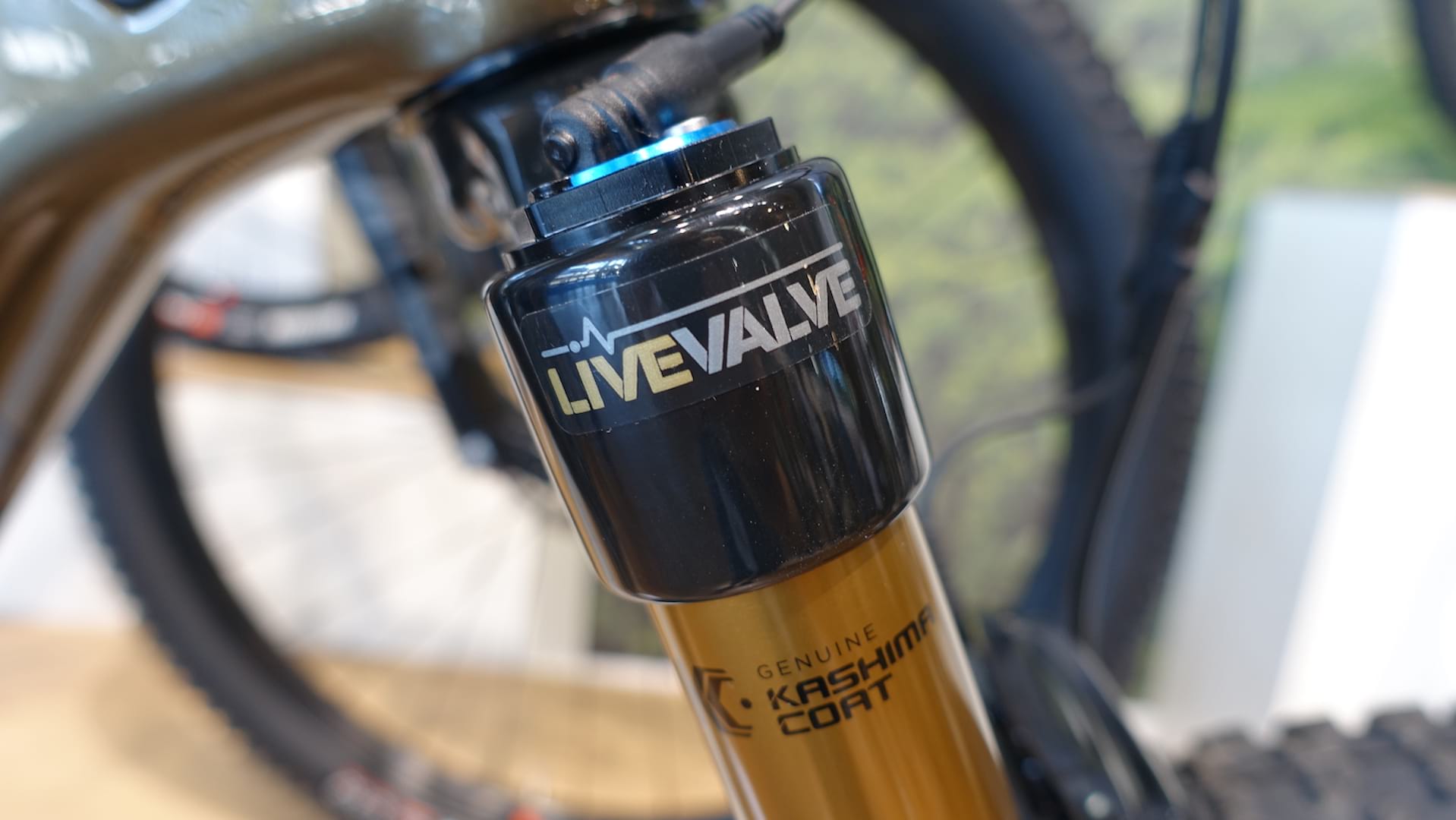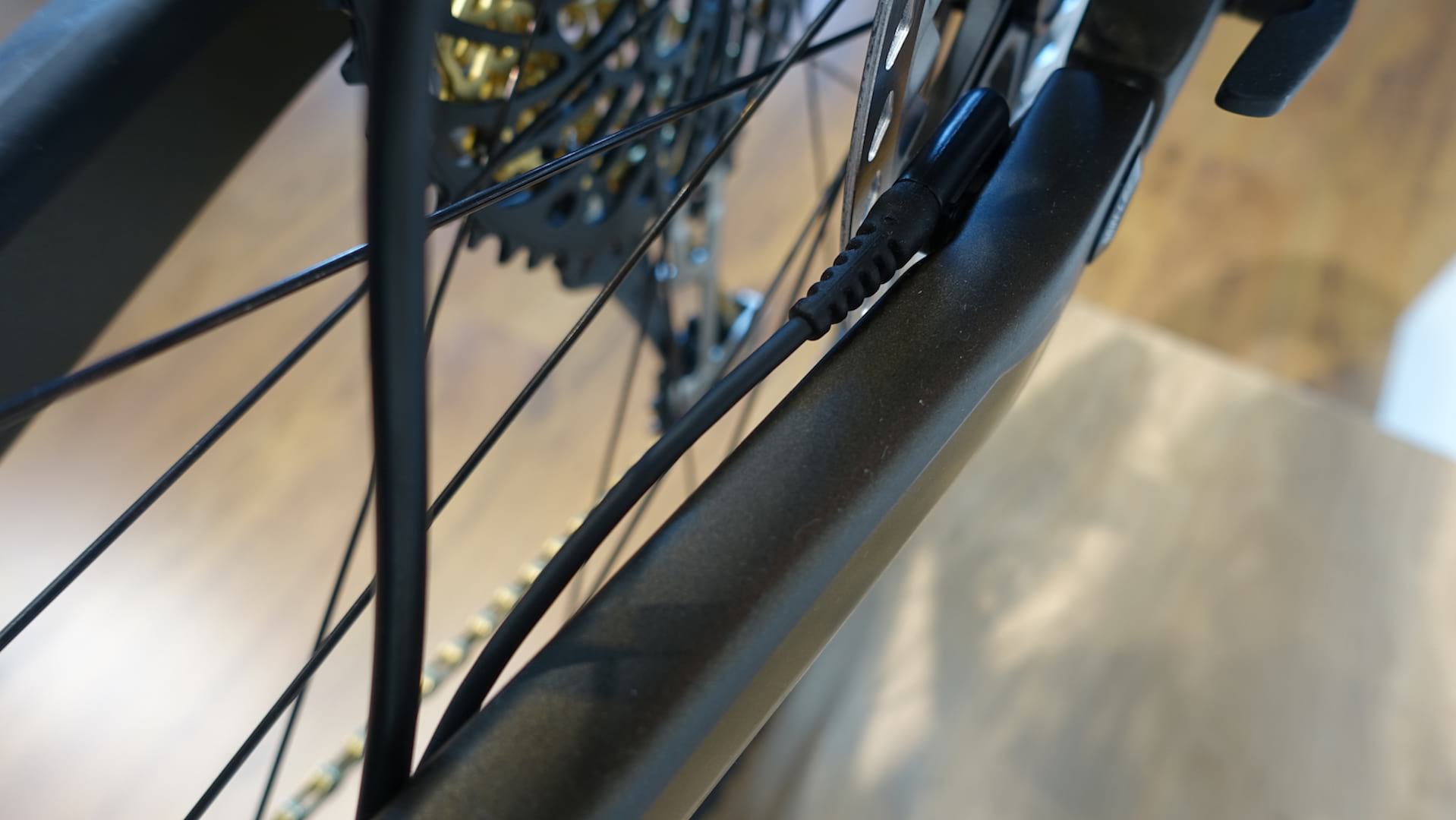These days at Eurobike, journos often get a head start on what’s going to be new at the exhibition. We start getting emails months beforehand, with a head’s up of what’s coming and what deserves our immediate attention as soon as those hall doors open on Day One. There’s a lot of product on show at Eurobike, so brands do whatever they possibly can to make sure we come and see them first. It’s nice not getting spoon fed that kind of information though, and it’s amazing what a good old wander through the halls can bring up as far as new and exciting product.
And today I struck gold while perusing the Scott Sports booth.
I was initially looking for the adjustable ramp control that Scott is spec’ing on the 2019 Genius range (more on that soon), but then I spotted an unusual looking Fox shock on the top-end Genius 900 Ultimate. Once I got up close though, it was clear that this was Fox’s brand new Live Valve rear shock and fork – YES!

Here’s a quick video I shot this morning to show you what exactly is on that Genius;
No idea what I’m talking about? Well allow me to do my best speculative explanation for you.
Fox’s Live Valve system was first shown in the wild about three years ago, and in essence, it was said to offer electronically controlled damping for both the fork and rear shock. With a series of sensors including accelerometers on the fork lowers and the rear dropout, a computer system determines what level of damping both the fork and shock should have. So in theory, you could have the rear shock nice and firm while you’re pedalling, and wide-open for the descents – with the suspension performing those adjustments by itself, without the rider having to flick dials or twiddle knobs.
We haven’t heard a peep from Fox since that early version appeared, though more and more mountain bike frames have been offering ‘Live Valve compatibility’ over the past 18 months (including the Giant Anthem, Pivot Mach 5.5, and the Rocky Mountain Altitude), signalling the electronic damping system’s inevitable arrival.
Given the amount of time that’s passed, I’m guessing the whole system has gotten a lot more advanced since Fox’s earlier prototypes. As to how it works and what it actually does, I don’t have the foggiest. But, based of of what I could see on this Scott Genius 900 Ultimate, I’ve got a few ideas;











As to how the rider will be able to setup and adjust the Live Valve system and how much of a benefit it will provide them on the trail? I’ve got no idea, but if it’s like everything else electronic these days, then you’ll probably be able to pair it with an app on your phone to tell the suspension what you want it to do.
Of course RockShox had a similar concept with the e:i system used in partnership with Lapierre, Ghost and Haibike a few years ago, and the idea was to improve pedal efficiency by automatically adjust the shock’s compression damping based on input from an accelerometer on the fork (to measure the bump force), a crank sensor (to detect pedalling), and a speedometer (to measure riding speed). Later versions of e:i worked really well (I tested e:i Auto and thought it was highly effective), but unfortunately e:i faded into obscurity – likely because of the added expense, but also because of the poor durability issues that earlier versions suffered from, and the resulting PR damage that did. Mountain bikers are traditionally wary of electronics on their bikes, so it was also likely a tough sell for dealers when customers could get the same bike without the electronic suspension for considerably less.
Regardless of those barriers, Fox appears to have been working on its own version of electronically-controlled suspension damping, and given the look of this unit on the Genius I saw at Eurobike, it appears to be very close to production.

Update: So according to this poster at the Fox booth, Fox Live Valve is going to be coming in late August of this year – so a little over a month away. If the poster is to be believed, the system will come with its own LED lazer lights that will light up your bike like an X-ray machine. Or not.
But it would seem that our earlier detective work is on the money. Fox’s poster states that Live Valve is a “Fast-acting automated suspension system”, so it’ll all be about having the fork and shock controlled by way of electronic sensors. On the image in the poster, there’s clearly a sensor on the fork lowers and on the rear dropouts, along with a battery pack that mounts just behind the bottle cage bolts. Presumably the system’s brain sits with the battery pack, and sends out its orders to both the fork and shock.
So what do you guys think of this Live Valve business? Were you a fan of the RockShox e:i system and sad to see it disappear? Or would you prefer to have zero electronic devices with you while riding (well, aside from your phone, watch, fitbit, GPS computer, e-MTB motor, electronic shifting etc…)?
Let us know what you think in the comments section below!






An on board Shockwiz constantly adjusting your suspension sounds like a good idea. Like all these things it’ll come down to durability in real world UK riding for most riders, though.
Even more cabling on a Scott? Who’d have thought it possible?!
I like the idea – it’s like a Specialized Brain with an actual brain! However, it looks a bit “first gen Di2” at the moment – i.e. big and clunky, and as mentioned in the article reliability would be a concern. Until, I see lots of pro racers trusting it to race on I’ll stay sceptical – not that I’ll be able to afford it mind! 😀